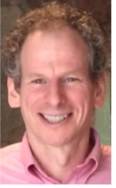This course gives engineering professionals the ability to successfully recognise, solve and avoid challenging EMI problems.
Demonstrations using working hardware illustrate concepts such as radiated emissions, high frequency antennas, radiated and conducted immunity and crosstalk in connectors, cables and IC packages.
This course is appropriate for experienced circuit and system design engineers, EMC engineers, as well as those who are new to EMI problem solving.
The course is based on over 30 years of hands-on troubleshooting experience and the latest EMC research.
This two-day course is Day 1 and Day 2 of a four-day programme:
- Day 1/Day 2: Applying Practical EMI Design and Troubleshooting Techniques
- Optional Day 3: Advanced Printed Circuit Board Design for EMI & Signal Integrity
- Optional Day 4: Mechanical Design for EMC
At checkout, you may choose to add either or both of Day 3 and Day 4 to your enrolment.


